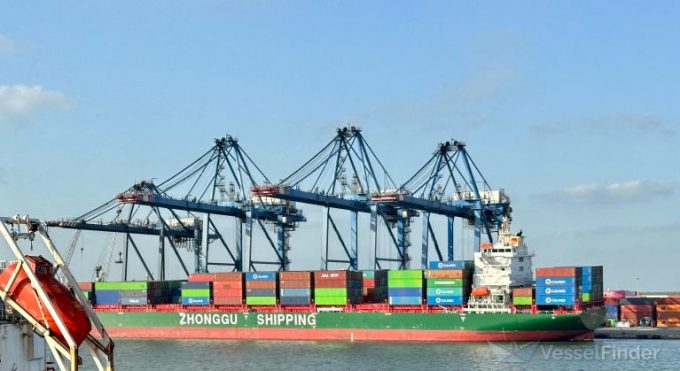Déjà vu as major ocean carriers scramble for tonnage and containers
Tight availability of boxships and equipment, last seen during Covid, is replaying as more and ...

Smaller shipping lines are continuing to operate in the Red Sea, despite a major attack by Houthis last night.
The US military reported that it and partners shot down 18 attack drones, two anti-ship cruise missiles and one anti-ship ballistic missile. There was no damage to ships or injuries to crew.
Four containerships were entering the danger zone this morning and another six under way, according to AIS data. Analyst Lars Jensen indicated that CMA CGM ships and the Maersk Atlanta may also be in the area, but without AIS.
While yesterday’s attack, the biggest so far, may deter mainline operators, smaller lines continue to transit the area owing to the rate premium it commands. Ship brokers report that recently, Milaha Line, X-Press Feeders and SeaLead Shipping have chartered vessels for Red Sea trading.
A Singapore-based broker told The Loadstar: “Some small and medium-sized shipping companies, including start-up Chinese operators, are still willing to provide services to the region and are looking for tonnage. There is still demand to move cargo to the Persian Gulf, even through the Red Sea, and operators can command higher rates.”
Far East-Persian Gulf rates have more than doubled year on year, to $2,340 per teu.
Since last month, SeaLead Shipping, one of the largest players in the Persian Gulf, has chartered five ships: Zhonggu Logistics’ 4,636 teu Zhong Gu Xi An and Zhong Gu Kun Ming; Northern Shipping Holding’s 3,534 teu Northern Discovery; Meratus Group’s 2,553 teu Marina Voyager; Doun Kisen’s 1,876 teu Bright Cosmos; and Soon Fong Shipping’s 1,560 teu Taichung.
Singapore-based X-Press Feeders has chartered Djibouti Shipping’s 1,118 teu Africa Sun and Conbulk’s 2,902 teu Palermo, both for Red Sea trading. Notably, X-Press agreed to a premium $15,500 per day to charter the 1998-built Palermo for six to nine months.
X-Press did not respond to The Loadstar’s request for comment, but a spokesperson for SeaLead told The Loadstar the company was taking precautions when sailing through the Red Sea.
He said: “Key among these are deployment of armed guards onboard our vessels, ensuring full compliance with the BMP code, and ensuring that SeaLead’s ships and operations have no Israeli connections or interests.” SeaLead targets Red Sea cargo and its fleet expansion has seen it become the 18th-largest liner operator.
Another broker said sourcing vessels was challenging as not many shipowners were willing to risk their vessels being attacked by the Iran-backed Houthi rebels.
Indeed, the SeaLead spokesperson said that the company had had to redeliver a few vessels because their owners refused to let the ships cross the Red Sea.
Reportedly, some operators have resorted to broadcasting signals that their vessels are not Israel-bound to deter Houthi attacks.
Meanwhile, economic growth in the Middle East has seen an increase in container shipping capacity in the region, with about 150 ships, or 1.17m teu on the Far East-Persian Gulf services, up 20% year on year.
Estimates from consultancy Linerlytica show that 80% of ships that previously transited the Suez Canal are now detouring round the Cape of Good Hope, due to the threat of attack.
Listen to this clip from The Loadstar Podcast of Xeneta’s Peter Sand, on how much capacity Cape diversions will take out of the global container shipping system.
Comment on this article